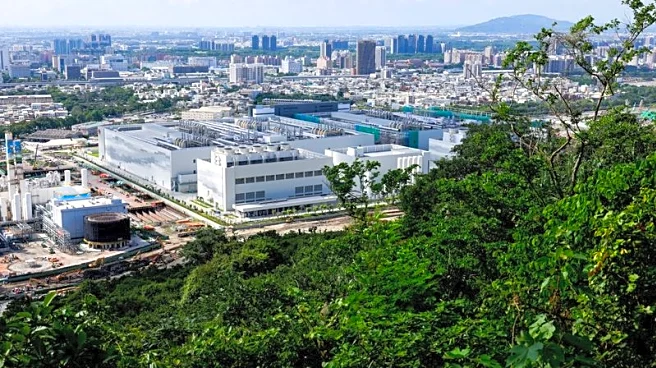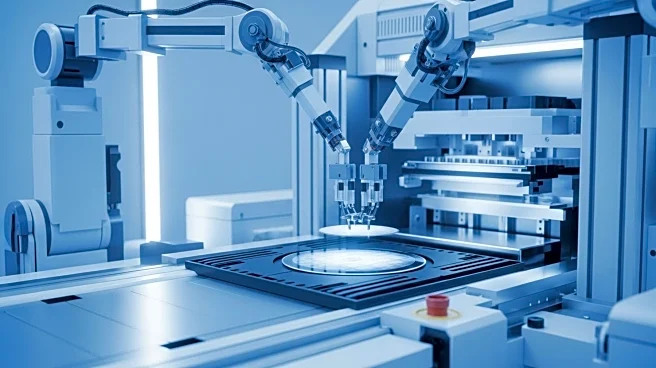What's Happening?
Sava Infond d.o.o., an institutional investor, has increased its stake in Taiwan Semiconductor Manufacturing Company Ltd. (TSMC) by 3.6% during the second quarter, as reported in its latest 13F filing with the Securities & Exchange Commission. The firm now holds 100,355 shares valued at approximately $22.73 million, making TSMC its ninth largest position. This move is part of a broader trend where several large investors have adjusted their holdings in TSMC, reflecting confidence in the company's performance. TSMC, a leading semiconductor manufacturer, reported a significant increase in quarterly earnings, with revenue up 44.4% compared to the previous year. The company has also announced an increase in its quarterly dividend, indicating strong financial health.
Why It's Important?
The increased investment by Sava Infond d.o.o. in TSMC underscores the critical role of semiconductors in the global technology supply chain, particularly for the U.S. tech sector. TSMC is a key supplier for many American tech companies, and its financial health directly impacts the availability and pricing of semiconductor components. The company's robust earnings and dividend increase signal strong demand and operational efficiency, which could lead to more stable supply chains for U.S. tech firms. This development is crucial as the U.S. continues to navigate semiconductor shortages that have affected various industries, from automotive to consumer electronics.
What's Next?
As TSMC continues to perform well financially, it is likely to attract further investment from institutional investors, potentially increasing its influence in the semiconductor market. The company's strategic decisions, such as expanding production capacity or investing in new technologies, will be closely watched by stakeholders. Additionally, any geopolitical developments involving Taiwan could impact TSMC's operations and, by extension, the global tech industry. U.S. companies reliant on TSMC may need to consider diversifying their supply chains to mitigate potential risks.











